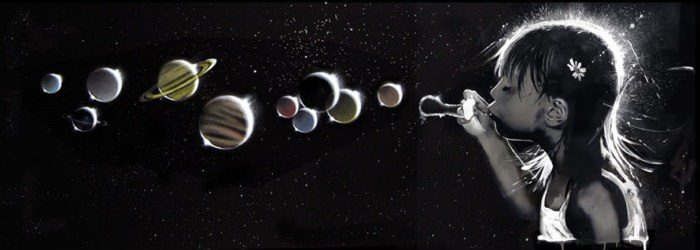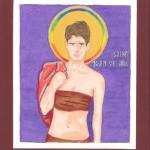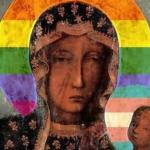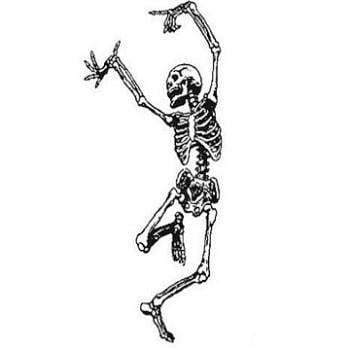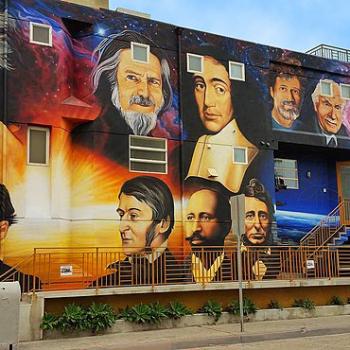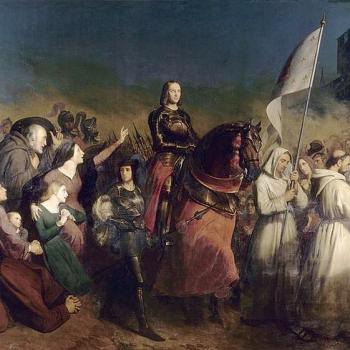In 1960, while being interviewed on the television show “Meet the Press,” Dr Martin Luther King, Jr, observed, “I think it is one of the tragedies of our nation, one of the shameful tragedies, that 11 o’clock on Sunday morning is one of the most segregated hours, if not the most segregated hours in Christian America.”
Sixty years and change later, it’s still true.
And, actually, the tragedy extends beyond Christian communities.
Perhaps one of the saddest things in my life is how segregated religious communities are. Including my own progressive and wishing to be more diverse communities. Both my liberal religious communities and my Zen Buddhist communities.
While I was studying in seminary I stumbled upon an essay where the author noted there is no such thing as an integrated church. Churches are always integrating or segregating. But there is no stasis point that, say, maps the local ethnographic mix. There is always a majority, ethnically. And it is the overwhelming majority. The author, as I recall, was an Asian American pastor of a predominantly white congregation. He noticed it was true of black communities as well as white. And he noticed how there were majority Asian congregations further divided by nations of origin, Korea, Japan, China to begin the list, for whom all of which, they were either segregating or integrating. No noun in it, only verbs, only motion.
Perhaps in the same essay, perhaps somewhere else I learned about what seems to be the twenty percent rule. That is the most welcoming of communities start to twitch when approximately twenty percent of some identified “other” joins. Even in the kindest and most welcoming community one begins to hear “they” language. And that language ends up with “they’re taking over.” And things happen to guarantee that taking over doesn’t occur. An example that was presented was the Buddhist Churches of America. A fully protestant-ized Shin Buddhist church. But also it served a Japanese descent population, and an enormous part of its activities centered on transmission of Japanese culture. Totally welcoming of non Japanese. Even have white ministers. Until…
And then later as I came to know the various Zen communities more deeply, I began to see, there are those that serve majority white populations, and those that serve majority Japanese populations. Later I saw the same thing happens in Korean derived Zen. As for instances.
It has been heartbreaking.
I’ve struggled against it, both individually, and in the communities that have called to my heart. And, I’ve noticed where I go. And where I feel “comfortable.” I use quotes here because of the complexity of comfort, and the lies and the truths that mix up within that most human of emotions.
Religion has always been the major focus of my life.
It was the focus of my childhood, it became the obsession of my adolescence, finding my best fit was the work of my young adulthood, and in my maturity I worked within religious community. My academic studies, formal and informal, were focused on religion. My books and and other writings have all been about religion.
The most important thing for me was that part of religion that is concerned with our relationships with ultimacy. I’ve found at various times in my life that ultimacy can be called God, the gods, nature, the world, the cosmos, the universe, and variations on empty. I’ve followed each down into depths that have transformed my life. I remain endlessly grateful.
Along the way I’ve also noticed that this is a minority aspect of the cluster of things that make up a religion.
The principal project of religion is and has always been cultural cohesion. I’ve mainly dismissed this aspect as crowd control. And I remain convinced that there is a coercive element that earns the pejorative.
At the same time I’ve found myself concerned with how that mystical element, the quest for and the finding of ultimacy, also informs how I engage my own culture. Particularly I’ve been concerned with how my findings within my quest of a binding unity actually informs how I see my relationships with others. The is both the human world and the larger natural world. If, my reasoning has gone, we are actually intimately related, as I’ve experienced at astonishing turns of my heart, well, then, there are consequences in how I’m going to live in this world.
And I extrapolate this out from my individual life to those larger aspects of my relationships. I’ve seen it like a Russian stacking doll. An image, and one that can’t be held too tightly. But it is helpful. Although I notice it can be expressed from both directions. The self, my sense of who I am, with its relative constants of geography and sloshing and changing biochemistry, but experienced constantly as an “I,” can be either the smallest doll in the center, or the outer doll. Going outward or going inward we discover those other aspects of who I am. Of who we are. Family. Extended family. Various communities, for me, the local religious community. And then its larger expressions. My town. My state. My region. My nation. The larger cultural extent of which my nation is a part. The world. To quickly attempt to capture various dolls.
One thing I’ve noticed along the way is any attempt I’ve made of drawing a hard line and saying the “I” of it is on one side, and the not “I” is on the other, ultimately falls apart.
Do I contradict myself?
Very well then I contradict myself,
(I am large, I contain multitudes.)
Or. Maybe the true is that multitudes contain me.
Stacking Russian dolls.
Religion about social cohesion, religion about ultimacy.
When I look at my religious communities, my liberal religious communities and my Zen Buddhist communities, I see the contradictions. I also, slowly, painfully, have come to see how important the cultural cohesion aspect is.
And, how invisible that can be to me. To us. And the damage that can be done because of our obliviousness. Or, more generously, what hurt can follow in the wake of our contradictory needs. All of which fit the bill as religious.
Is there a fix? Or, what should be a fix? Lots of questions here.
It does seem that a necessary feature of seeking to heal the wounds of culture needs to start with noticing how we divide ourselves.
I’m not presenting a solution. Smarter people than me have failed in their quests for solutions.
But I have some senses of what might be right directions. The first of these, of course, or course, is humility.
The Zen teachers always tell us only don’t know.
Beginner’s mind is best.
And then we need to try and see what actually is happening. With as little judgment as we can bring to the project. Another Zen rule: the great way is not difficult, it simply avoids picking and choosing. Another conundrum. I believe for our purposes here it means start as innocent as possible. Judgements have to enter the picture, but later. After we see what is.
As best we can.
And then, perhaps the most important too of all.
And that’s found in the core, the mystical, the sense of ultimacy.
If I find myself, if we find ourselves surrendering into the mystery, well, then, things do happen.
We care. We love. We want the best. For ourselves. And for everyone else.
So.
Maybe in there, somewhere, in there, is the path through for all of us.
A mindbubble on a Wednesday morning…


